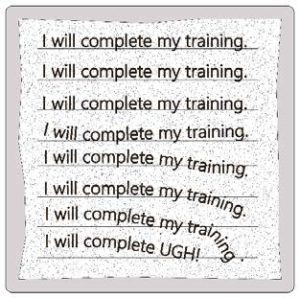We had a blast at the #STC17 Summit. Here are slides from our meeting.
stc-idl-sig-2017 Business Meeting Presentation
We had a blast at the #STC17 Summit. Here are slides from our meeting.
stc-idl-sig-2017 Business Meeting Presentation
 Readers, we are late with delivering our Q1 2017 newsletter and for this we humbly apologize.
Readers, we are late with delivering our Q1 2017 newsletter and for this we humbly apologize.
We are experiencing some challenges with our website.
For the PDF version of IDeaL: Design for Learning, I thank Lori Meyer for all the layout work. I could not have done it without her! Where we fell short in delivery time, we make up for in great content.
In this issue, we have begun reaping the rewards of our student outreach competition: We are thrilled to publish the first of several student essays, which our esteemed judges found to have clear value to our readership.
Read the full newsletter as pdf here.
Co-manager’s report: Go Summit 2017!
Co-manager’s report: Opportunities are waiting for you – learn and grow with us!
Engaging the Reluctant Learner
Part 2 of Page Layout: Understanding Sections in Word
STC IDL SIG shares with InfoDevDC
Member Spotlight: Meet Kim Lindsey
Book Review: Webinar School: Planning, Producing, and Presenting Your Training Webinar
By Lori Meyer
 The Summit conference is a special time for SIGs like ours, because it’s the one time of the year our members can meet in person, get to know one another, and teach and learn together. Summit is also the perfect time to learn more about how you can be involved in YOUR instructional design and learning community! We thrive as a professional community because of you — your leadership, your creativity, and your service make a difference!
The Summit conference is a special time for SIGs like ours, because it’s the one time of the year our members can meet in person, get to know one another, and teach and learn together. Summit is also the perfect time to learn more about how you can be involved in YOUR instructional design and learning community! We thrive as a professional community because of you — your leadership, your creativity, and your service make a difference!
Our SIG will be honored with two major STC awards this year: the Platinum Community Achievement award, which signifies excellence and above-and-beyond achievements throughout the previous year, and the Pacesetter Award, which is given to communities who have demonstrated innovative work that can be modeled by other communities. We received these awards because members just like you became involved and generously gave their time and talent. Many helping hands just like yours helped us earn this recognition.
But more importantly, involvement is about YOU — about learning and growing in a community that treasures teamwork, friendship, and fun. Every new volunteer, no matter what role they play, has an opportunity to touch our community in a positive way and make a difference. We are proud of our achievements and awards, but just as proud of the fact that we are a strong, warm, and welcoming community that works every day to provide value to all of its members.
At Summit, you’ll have an opportunity to meet and talk with our leadership team, and find out how you can be part of our great corps of volunteers. Come to our community reception table on Sunday, and to our business meeting and brown-bag lunch on Tuesday. We’ll be delighted to tell you more about how you can become involved. Until then, let me tell you about two roles that we are seeking to fill as soon as possible.
If one of these roles interests you, we will provide the training you need to be successful. And you won’t work in isolation — our leadership team is truly a team that is there for one another. Come and see us at Summit — we can’t wait to tell you more about our wonderful community of learners and teachers. If you can’t make it to Summit but would like to know more about getting involved, contact us at managers@stcidlsig.org. We look forward to talking with you!
by Marcia Shannon, Secretary
The first quarter of 2017 may be history, but if you made a resolution to become more involved, opportunities are always available. Is there a webinar topic you would like to see or present? Do you have ideas for attracting new members? Can you give a couple of hours a month toward keeping the IDL SIG strong and active? Whatever you contribute, you will find that you benefit even more by gaining new contacts and new ideas.
If you are attending Summit, we will be there is several ways, from session presenters to information tables to the SIG Business Meeting. Plan to attend the meeting and put faces to the names you hear each month. Summit provides a great opportunity to network and learn; I always find it a worthwhile experience.
Connect to our award-winning IDL SIG via social media to stay informed, share your IDL news and views, and publicize your involvement at your local STC events. Find us on Facebook, LinkedIn, and Twitter.
Reminder: All SIG members are welcome at our monthly leadership meeting. Follow the login instructions in your monthly email to login to the online meeting. This is a great way to find out what is happening in the SIG. The co-managers share the latest news from STC, the committee leaders report on their events and activities, and questions from the “floor” are always welcome. Make the 4th Wednesday of each month your “connect and contribute” day for the SIG.
By Leland Stoe
 Most of us have been on the other end. We’ve sat through training in various formats and wondered when and where we would ever apply the knowledge. If you’re like me, you’ve even rolled your eyes, at least figuratively. You may have thought, “What a waste of time.” However, the battle to win over the reluctant learner is not futile.
Most of us have been on the other end. We’ve sat through training in various formats and wondered when and where we would ever apply the knowledge. If you’re like me, you’ve even rolled your eyes, at least figuratively. You may have thought, “What a waste of time.” However, the battle to win over the reluctant learner is not futile.
For a recent college class, I created an online training
module targeting an audience of what I found to be
reluctant learners. I learned a lot firsthand and hope
that my experience can help you reach your reluctant
learners.
Here are 10 keys to consider when reaching out to reluctant learners:
Written objectives serve as a compass to guide your project. Remember to consider business and safety aspects as you write. Keep your objectives by your side and refer to them often, especially if you suspect you may be veering off the path. Learning is more achievable when every part of the material supports one or more objectives.
Get to know your learners through a variety of means. Try using short online surveys, personal observations or interviews. By conducting research up front, you’ll be prepared to reach your learners in the most appropriate ways. You’ll learn about their learning preferences, work environment, attitude toward learning and such. This gives you the best chance of connecting with your learners. The best outcomes result from meaningful research. Such analysis is foundational to your process.
Give learners the “What’s in it for me?” to encourage them to engage and care about the material. If you’ve analyzed your learners, the WIIFMs are likely to pop out at you. Don’t forget to tell learners why this training matters to the organization as well. Engaged learners have higher retention rates.
Remember to focus on your objectives. Limit your material to those important aspects that support your written objectives. Ruthlessly weed out the remainder. I’ve never met anyone who enjoys wading through or listening to gobs of material. By compacting your material, you’ll show your learner that you value their time.
Present the material in ways that play to your learners’ natural preferences. This is where your audience analysis is critical. Some people prefer written material, while others prefer video or audio. Don’t be afraid to use multiple channels, especially when group members have differing preferences. The key is to use your audience analysis to maximize your reach.
Deliver your message in a conversational tone. Use your learner analysis findings to guide your words and technique. By creating a dialogue of sorts, you demonstrate to your learners that you understand them. They will feel respected. And when people feel connected, they are more likely to engage and care about the content.
Break free of the seriousness and lighten the mood. Reflect on your objectives and learner analysis, and find creative ways to break the monotony while fulfilling your purpose. Consider using a game rather that a test to determine how much your learners have absorbed. If you don’t have the skills or resources to create a game, try injecting humor into your training. It’s harder to be a disengaged learner when you are having fun.
Divide your content into manageable pieces. Many learners feel overwhelmed when faced with one long, unbroken session. They may also feel anxious about whether they can retain the material well enough to pass a cumulative test. Slip knowledge checks in at intervals to help your learners feel a sense of success and accomplishment along the way. Reducing their stress and anxiety can lead to better retention.
Teach in a way that learners can emulate in their own world. One way to accomplish this is to use the same application or technology that the learners use. In addition, detailed concepts or instructions can be difficult for learners to remember, so make every effort to help them. This can be done by offering a printable job-aid, perhaps a simple mnemonic, showing key facts or processes. Such a tool helps learners apply their new knowledge or skill independently.
Use simple and clear terminology. Resist the urge to use fancy words and acronyms unless they are familiar to your audience. Revisit your learner analysis if you’re unsure. Using big words often only complicates an already difficult learning process. You want your learners to focus on the material, not on trying to decipher the meaning.
Above all, remember that audience analysis forms the foundation for your content. How you gather this user-analysis data is less important than gathering revealing data, so explore creative avenues when researching your learners. Consider the whole person when brainstorming learner-analysis methods. There is no single recipe that works for every situation. Just focus on understanding your learners, and consider how you can best reach them. Think of your learners as customers, and do everything you can to satisfy them. Your learners will benefit from your diligence, and they will undoubtedly learn and retain more.
Implementing these 10 keys requires thoughtful planning, and that means spending more time up front. But the rewards are worth the investment. You’ll create userfocused content that has greater value to your reluctant learners, and you’ll do so more efficiently. Everybody wins.
Leland Stoe is an undergrad studying Technical Communications & Professional Writing at Metropolitan State University in St. Paul, Minnesota. He is employed as a manufacturing engineer at a large Twin Cities aerospace company.